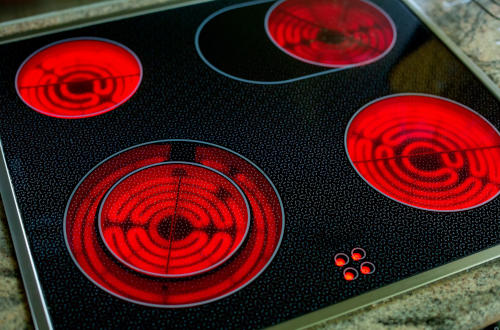Residential Electric Cooking Products
Last Updated: 02/26/24
A household cooking appliance consisting of a horizontal surface containing one or more surface units that utilize electric resistance heating or electric inductive heating. This includes electric cooking top component of conventional electric ranges (a combined electric cooking product), a standalone conventional electric cooking top (including portable conventional electric cooking tops), or any conventional electric cooking top component of a combined electric cooking product. Combined electric cooking products include the following products: conventional electric range, microwave/conventional electric cooking top, microwave/conventional electric oven, and microwave/conventional electric range.
 Product Details
Product Details
To the maximum extent practicable, federal agencies are required to buy sustainable products, which are products that meet the purchasing program(s) listed below.
If there is more than one program listed below, agencies are directed to prioritize multi-attribute products, which meet statutory purchasing program requirements (![]() ) and one or more required Environmental Protection Agency purchasing programs.
) and one or more required Environmental Protection Agency purchasing programs.
Review our frequently asked questions for more information.
|
Procurement Info
|
Where to Buy
|
|---|---|
 Legal Requirements
Lists federal requirements related to the purchase of this item, including applicable Federal Acquisition Regulation (FAR) requirements
Legal Requirements
Lists federal requirements related to the purchase of this item, including applicable Federal Acquisition Regulation (FAR) requirements
 Life Cycle Cost Savings
Life Cycle Cost Savings
Life Cycle Costing (LCC) aims to quantify the financial impact of a product over its entire life cycle to assist consumers in making decisions that will save them money over the long term.
An efficient product is cost effective when the energy costs saved over the life of the product exceed the additional upfront cost (if any) of the more efficient model. Energy Star considers both upfront costs and lifetime energy cost savings when setting required efficiency levels. Federal purchasers can assume that Energy Star-qualified products are life-cycle cost effective.


 Energy Star
Energy Star